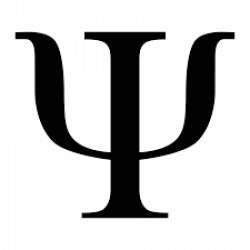psi

Psi is the 23rd letter of the Greek alphabet and has a numeric value of 700. In both Classical and Modern Greek, the letter indicates the combination /ps/ (as in English word "lapse")
For Greek loanwords in Latin and modern languages with Latin alphabets, psi is usually transliterated as "ps". In English, the letter is pronounced /ˈsaɪ/ or sometimes /ˈpsaɪ/. (In Greek, it is pronounced [ˈpsiː].)
The letter's origin is uncertain. It may or may not derive from the Phoenician alphabet. It appears in the 7th century BC, expressing /ps/ in the Eastern alphabets, but /kʰ/ in the Western alphabets (the sound expressed by Χ in the Eastern alphabets). In writing, the early letter appears in an angular shape (Greek Psi straight.svg). There were early graphical variants that omitted the stem ("Chickenfoot-shaped psi" as :Greek Psi V-shaped.svg or Greek Chi 05.svg).
The Western letter (expressing /kʰ/, later /x/) was adopted into the Old Italic alphabets, and its shape is also continued into the Algiz rune of the Elder Futhark. The classical Greek letter was adopted into the early Cyrillic alphabet as "Ѱ".
The letter psi is commonly used in physics to represent wave functions in quantum mechanics, such as in the Schr
© Symbols.com
